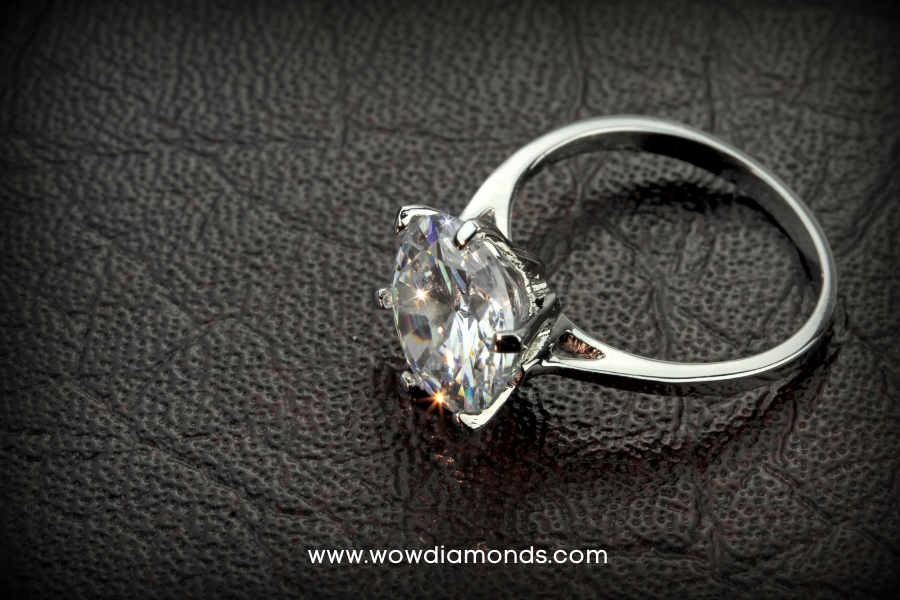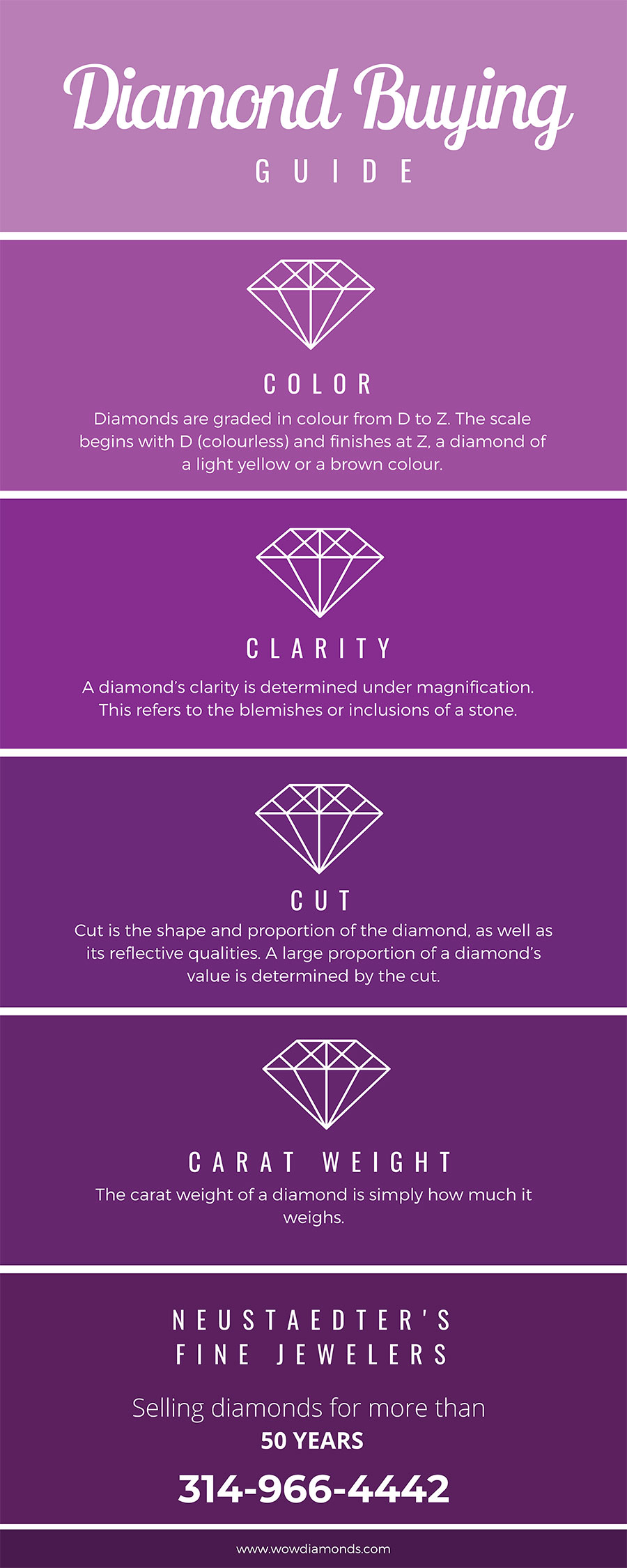The four C’s are the major attributes of a diamond: Carat, Cut, Color and Clarity. These four characteristics are used to identify the size and quality of the diamond. They also help by differentiating between similar diamonds and establishing the diamond’s value and price. The grading scales for the four C’s are established by the Gemological Institute of America or GIA. These standardized grading scale practices allow consumers and gemologists to accurately identify and categorize diamonds.
Carat:
A diamond’s carat is its weight and reflects the size. The larger the diamond, the rarer and more valuable it becomes. Not to be confused with karat (a measure of gold purity), a 1.00 carat or ct diamond weighs 0.20 grams. The size of a diamond is measured in millimeters by length and width or, in other words, the diameter of the diamond.
Diamonds within each carat range have average millimeter sizes so you can approximate their visual size. Although each diamond is unique, these millimeter measurements are typically the norm, especially since diamonds today are cut with machines to ensure precision. To truly understand the diamond’s size, evaluate the measurements.
The 4 C’s are the major attributes of a diamond: Carat, Cut, Color and Clarity. These 4 characteristics are used to identify the size and quality of the diamond. They also help by differentiating between similar diamonds and establishing its value and price. The grading scales for the 4 C’s are established by the Gemological Institute of America or GIA. The standardized grading scale practices allow consumers and gemologists to accurately categorize diamonds.
Carat:
A diamond’s carat is its weight and reflects the size. The larger the diamond, the rarer and more valuable it becomes. Not to be confused with karat (a measure of gold purity), a 1.00 carat or ct diamond weighs 0.20 grams. The size of a diamond is measured in millimeters by length and width or in other words the diameter of the diamond.
Diamonds within each carat range have average millimeter sizes so you can approximate their visual size. Although each diamond is unique, these millimeter measurements are typically the norm, especially since diamonds today are cut with machines to ensure precision. To truly understand the diamond’s size, evaluate the measurements.
Cut:
Diamonds are cut to maximize the sparkle, fire, brilliance and overall visual beauty of a diamond. The cut is a measure of light performance as light hits a diamond. Diamonds sparkle is a result of light performance. As light hits a diamond, it penetrates, bounces around and reflects within the diamond. The light returning to your eye is the sparkle that you see. The cutting of a diamond directly impacts the amount of light performance achieved. The angles, locations, sizes and shapes of facets will determine the diamond sparkle.
Fair & Poor: Diamonds with significant light leakage are categorized as Fair or Poor grade. These diamonds tend to leak large amounts of light from being too deep or shallow in height. They have little brilliance and are less visually appealing.
Good: Well cut diamonds that capture light and possess high degrees of sparkle. Good cut diamonds have some light leakage, but overall shine bright. These diamonds can have noticeably larger or even smaller measurements than perfectly cut diamonds of the same shape. Cutters may intentionally cut to Good proportions to achieve a particular look or style.
Very Good: Very well cut diamonds capture almost all the potential of the diamond. Very brilliant with minimal light leakage.
Excellent: The highest grade representing the top diamonds in the world. Diamonds with an Excellent cut grade are masterfully crafted and precisely cut to unleash the maximum sparkle and brilliance of a diamond. Minimum light leakage occurs as light passes through a diamond.
Cut is often consider the most important of the 4 C’s of diamonds (carat is more of a preference, not an art or science). When selecting a diamond, it is important to ensure light is not lost. Excellent cuts are most premium.
Color:
A diamond’s color is the soft tint of yellow/brown that is seen inside the diamond. All diamonds on the GIA D through Z scale are considered white although on the lower end they can have a tinge of yellow color. Color is a natural element in diamonds. The more color, the less the sparkle of the diamond because light performance/reflection is reduced. Color is essentially a visual distraction that affects sparkle. The grade is a representation of how much that color shade can be seen. Diamond color is graded by evaluating the body color of the diamond on a pure white background, face down. From face up, color is harder to identify.
Clarity:
During the diamond growth process, microscopic impurities or imperfections become present within the diamond. These imperfections are known as diamond inclusions. Inclusions are extremely common within diamonds and give every diamond it’s uniqueness. The inclusions cumulatively make up the diamond’s clarity. This clarity is measured by gemologists and graded on a scale. Diamonds range in clarity from FL – I3.


